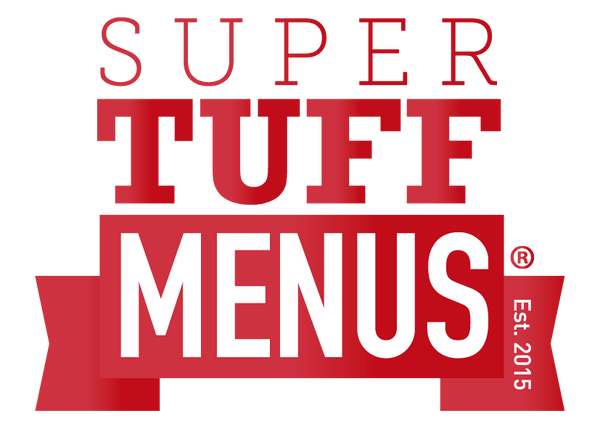Is your restaurant welcoming the rising Vegan diet choice? The number of vegans in Great Britain quadrupled between 2014 and 2018. In 2018 there were 600,000 vegans, or 1.16% of the population; 276,000 (0.46%) in 2016; and 150,000 (0.25%) in 2014.
As noted via the Vegan society: "If the world went vegan, it could save 8 million human lives by 2050, reduce greenhouse gas emissions by two thirds and lead to healthcare-related savings and avoided climate damages of $1.5 trillion." (Source: OxfordMartin.ox.ac.uk )
With so many political hot potatoes discussing climate change, animal welfare and the meat industry, there are expectations that veganism will continue to surge in popularity in the coming years. Whilst we're not here to tell people how to eat, how to live, or what they should or shouldn't be selling on their menu - we do think it's worth shouting about what you do in the most positive way.
If you're embracing the dietary choice and looking to increase sales/visibility to the vegan (or even vegetarian) demograph, then you may want to use Menu Engineering to enhance your menu!
If you're embracing the dietary choice and looking to increase sales/visibility to the vegan (or even vegetarian) demograph, then you may want to use Menu Engineering to enhance your menu!
Hot tip, if you haven't already learned about Menu Engineering, we've a four part guide starting here!
Method One: The Section.

The first method, is to simply grab all your vegan / vegetarian items, and give them their own section.
This is fairly self explanatory and doesn't take much explaining.
By putting all available items in their own section your offerings are now easily accessible. A passing customer can quickly identify how much choice they'll have with you, and feel both considered and important. Many restaurants might only chuck on a vegan soup of the day as an after thought or a predictable Mac'n'cheese for Vegetarians as a halfhearted inclusion tactic - but not you! Let everyone know how well you cater and care!
This is fairly self explanatory and doesn't take much explaining.
By putting all available items in their own section your offerings are now easily accessible. A passing customer can quickly identify how much choice they'll have with you, and feel both considered and important. Many restaurants might only chuck on a vegan soup of the day as an after thought or a predictable Mac'n'cheese for Vegetarians as a halfhearted inclusion tactic - but not you! Let everyone know how well you cater and care!
Method Two: The Colour Highlights

Contrary to the above method of separating Vegan items into a stand-alone section, you may analyse your menu and reach the conclusion that the menu flow shouldn't be disrupted by yet another section.
This method will work best if you haven't already added lots of highlights, features, special boxed items and busy little emphasising here and there.
On a nice clean menu, ideally with only a few colours, why not amplify the Vegan choices with a green highlight on the options. Green is the obvious choice due to it's association with the environment, eco-friendliness and Veganism. The aim here is to quickly draw the eye to these options, which will be a welcoming technique for potential customers of this diet.
This method will work best if you haven't already added lots of highlights, features, special boxed items and busy little emphasising here and there.
On a nice clean menu, ideally with only a few colours, why not amplify the Vegan choices with a green highlight on the options. Green is the obvious choice due to it's association with the environment, eco-friendliness and Veganism. The aim here is to quickly draw the eye to these options, which will be a welcoming technique for potential customers of this diet.
Method Three: The Showstopper

Another effective method, especially to get them in the door, is to have one item championed. Perhaps your analysis has found that your Vegan Waffles (with 'vegan chicken', peanut butter dressing and maple syrup, yum) have became an unmissable purchase and are highly loved - good! Shout about it!
Give this item it's own area on the menu, highlight it in a box, ham up the description (or... a meat-free suitable word-choice...) and stop people in their tracks. You'll get folk in the door for it, and they'll take the time to look for other options available for them.
- If a restaurant is to champion a Vegan item, it implants the idea that the restaurant also may champion Veganism in general.
Give this item it's own area on the menu, highlight it in a box, ham up the description (or... a meat-free suitable word-choice...) and stop people in their tracks. You'll get folk in the door for it, and they'll take the time to look for other options available for them.
- If a restaurant is to champion a Vegan item, it implants the idea that the restaurant also may champion Veganism in general.
There are other routes to go down, have you tried any other solutions and found success? Let us know!
We love hearing Menu Engineering journeys and moments of glory.
We love hearing Menu Engineering journeys and moments of glory.
Other Sources: Ipsos Mori survey, commissioned by The Vegan Society, 2018, and The Food & You surveys, organised by the Food Standards Agency (FSA) and the National Centre for Social Science Research (Natcen).

